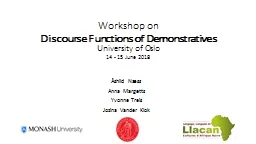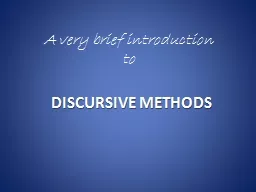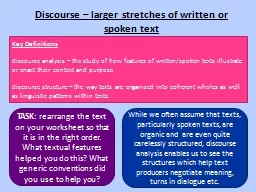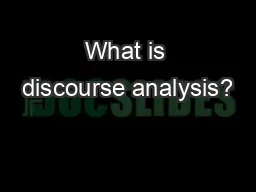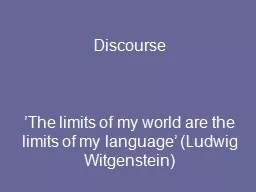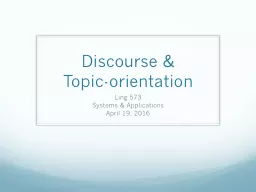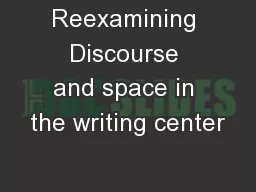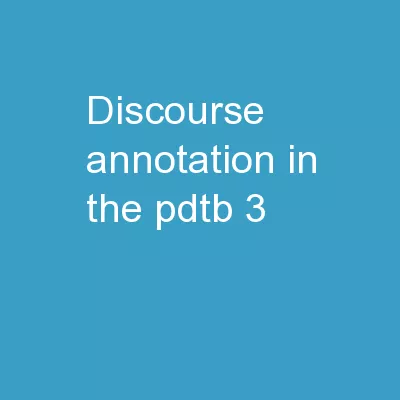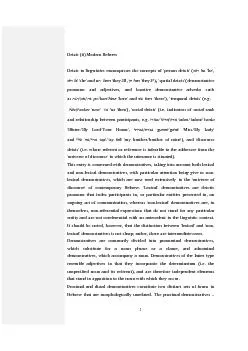PPT-Workshop on Discourse Functions of Demonstratives
Author : phoebe-click | Published Date : 2019-12-03
Workshop on Discourse Functions of Demonstratives University of Oslo 14 15 June 2018 Åshild Næss Anna Margetts Yvonne Treis Jozina Vander Klok 1 Small programme
Presentation Embed Code
Download Presentation
Download Presentation The PPT/PDF document "Workshop on Discourse Functions of Demo..." is the property of its rightful owner. Permission is granted to download and print the materials on this website for personal, non-commercial use only, and to display it on your personal computer provided you do not modify the materials and that you retain all copyright notices contained in the materials. By downloading content from our website, you accept the terms of this agreement.
Workshop on Discourse Functions of Demonstratives: Transcript
Download Rules Of Document
"Workshop on Discourse Functions of Demonstratives"The content belongs to its owner. You may download and print it for personal use, without modification, and keep all copyright notices. By downloading, you agree to these terms.
Related Documents

